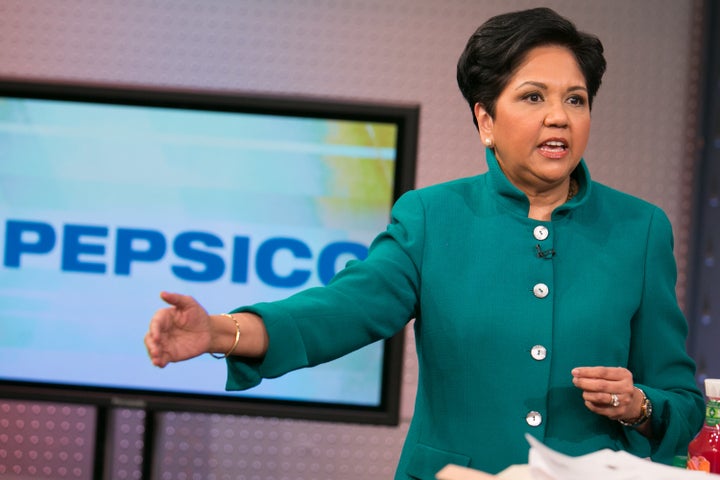
Indra Nooyi, the CEO of PepsiCo. New research finds that women in management see greater pay disparities with men than women in working-class jobs.
Happy Women's Equality Day!
There's no better day to remember that women in America are still far from equal at work -- even at the very top.
Three researchers at the New York Fed wrote in a blog post Tuesday that they found women in management see an even greater disparity in compensation between themselves and their male peers than women in working-class jobs. The post was a follow-up on an earlier NY Fed staff report on the same issue.
The researchers said they found that female executives, quite simply, get screwed when it comes to compensation. They found that women at the top get less incentive pay -- things like stock and bonuses on top of their salary -- than their male counterparts. That tends to mean that they experience less of the upside when their companies do well and are more exposed to declines in their company's value when things go poorly than male executives.
The researchers think that the reason this happens is because women tend to be younger and have looser networks than their male counterparts when they come into executive positions. Basically, women aren't in the old boys' club. This means that they aren't likely to have as many buddies on the board of the company as male CEOs. Boards approve executive compensation packages, so weaker networks can mean that women have less negotiating power when it comes to getting a package approved. A less friendly board, it turns out, often means fewer stock options.
There is one bit of good news, according to Claudia Olivetti, an economist at Boston College and one of the researchers who published the study.
"The good news is that part of the gender differences in compensation can be explained by the fact that female executives tend to be younger and have shorter tenure than male executives -- there are very few women in the earlier cohorts," she said. "So going forward, as more women get into the ranks of executives and start having longer tenure, things should improve."
(That, of course, assumes women will start breaking into the C-suite at higher rates, which is hardly a given.)
The findings come just a few days after the SEC announced a new rule on how companies have to disclose executive pay. The new rule says that public companies have to publish the ratio of CEO pay to the pay of its median employees. Some people think this rule might embarrass companies into reducing CEO pay, although others, like Bloomberg View's Matt Levine, believe that "all executive-pay rules have the effect of increasing executive pay."
This may also be bad news for women further down the pay scale. New research shows that incentive pay, also known as variable pay, is on the rise for employees at all levels of the company. Less fixed pay raises coupled with more variable pay allows companies to reward top employees without making a big commitment.
While non-executive female employees don't have their pay structures approved by a board of directors, and therefore wouldn't have exactly the same problems as female CEOs, the realities of network effects remain the same. If there are more men at the top of the company making decisions on variable pay, are the people they feel more connected to -- that is, other men -- more likely to see higher rewards?
It's a question worth asking.
